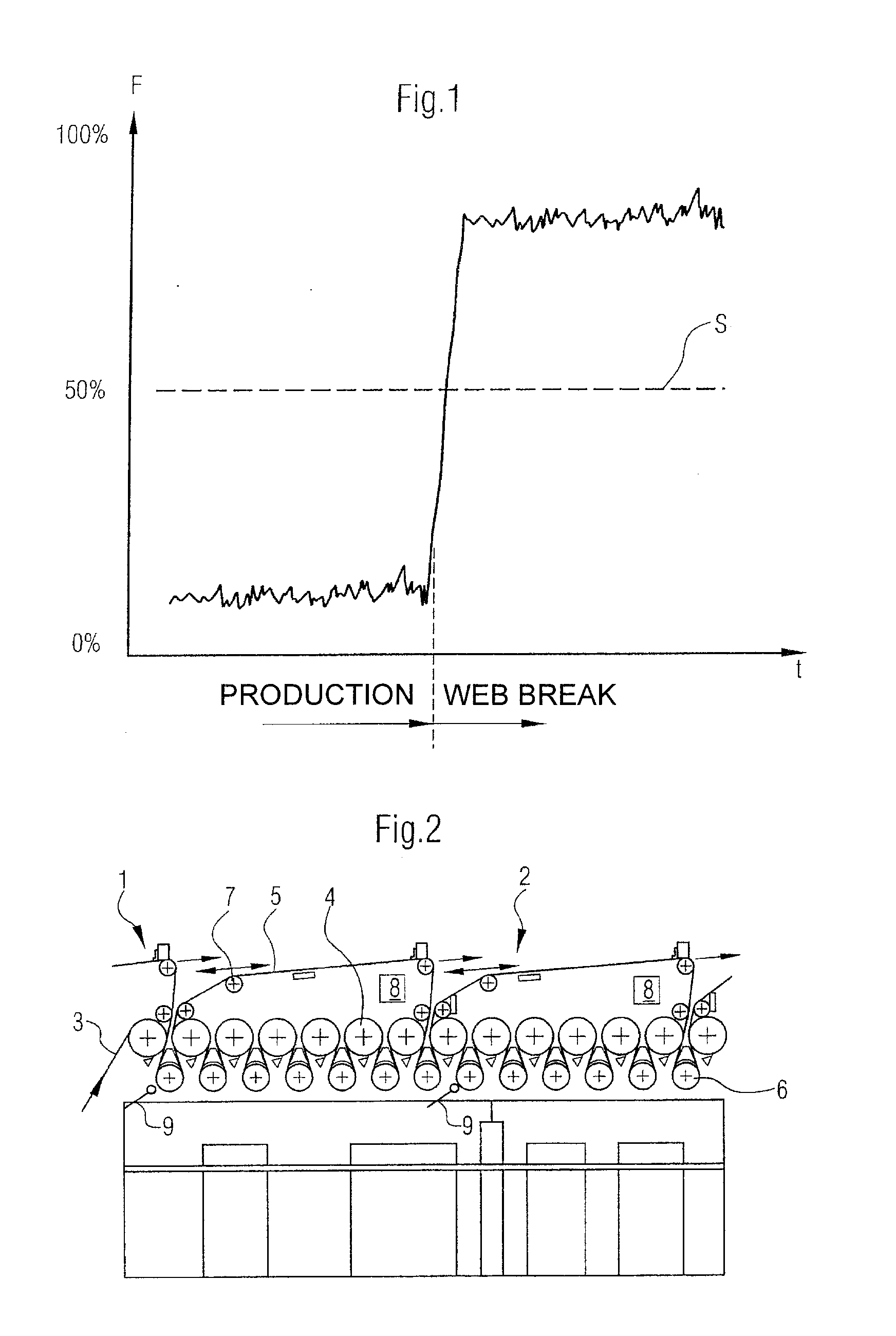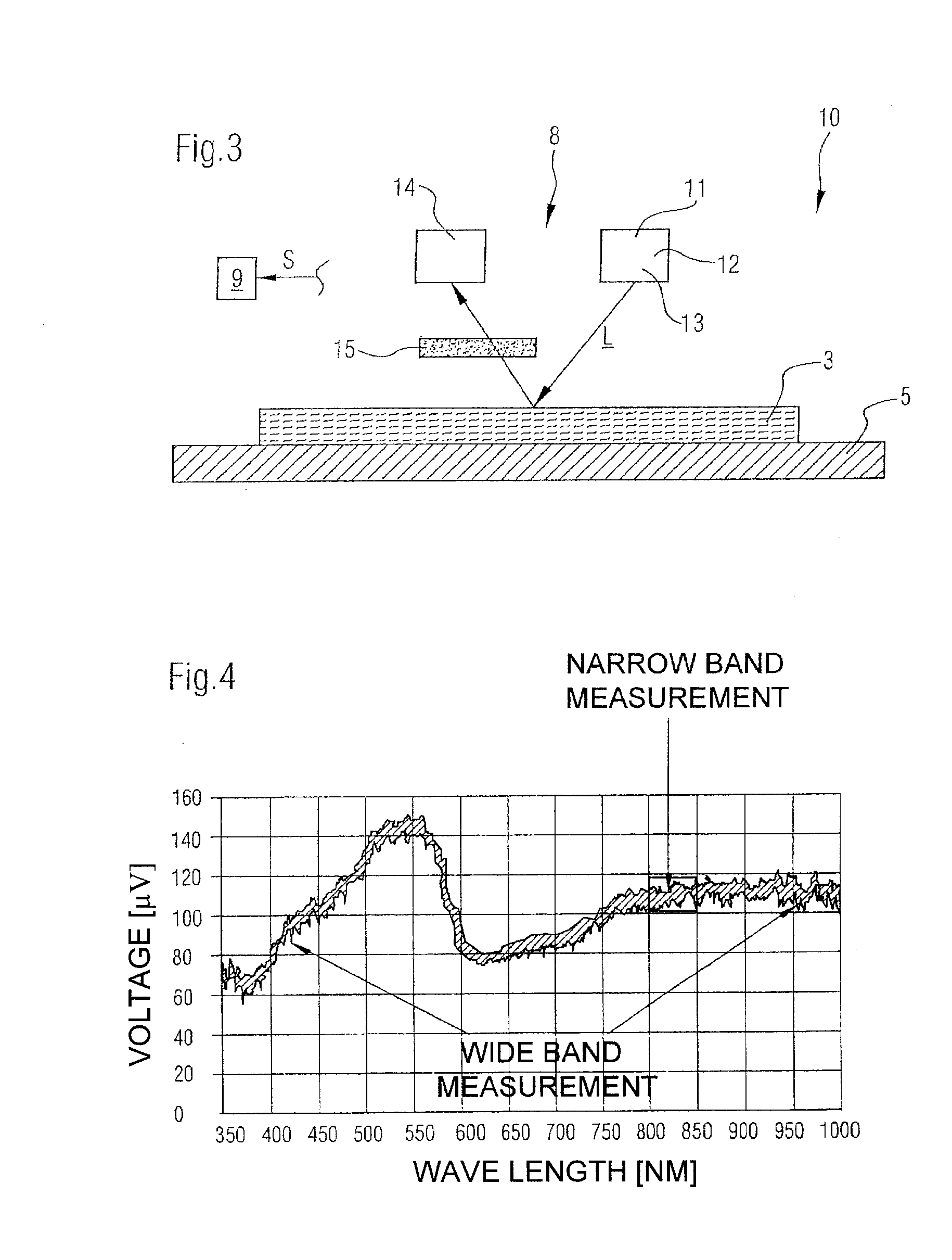Method for detecting a fibrous web tear in a drying section of a machine for producing the fibrous web and apparatus for performing said method
a drying section and fibrous web technology, applied in the field of fibrous web tear detection in the drying section of the machine for producing the fibrous web, can solve the problems of unsuitable light barriers, unreliable, and inability to distinguish clearly between the fibrous web and the dryer fabri
- Summary
- Abstract
- Description
- Claims
- Application Information
AI Technical Summary
Benefits of technology
Problems solved by technology
Method used
Image
Examples
Embodiment Construction
[0037]Referring now to the drawings, and more particularly to FIG. 2, there is shown schematically a side view of a detail of a drying section 2 of a machine, generally designated by 1, for producing a fibrous web 3.
[0038]Within the machine 1, the drying section 2 performs in known manner the function of removing moisture from a produced and / or processed fibrous web 3, meaning the function of drying it.
[0039]This is done in the example shown in FIG. 2 by way of contact drying, whereby a fibrous web 3 fed from the left in the drawing is dried by direct contact with a plurality of drying cylinders 4 on the one hand and an endless dryer fabric 5 circulating around the drying cylinders 4 on the other hand.
[0040]Presented in FIG. 2 are two dryer fabrics 5 in their complete path of rotation, whereby each of the dryer fabrics 5 circulates respectively around one group of drying cylinders 4. To be more precise, each dryer fabric 5 undulates in the region of the drying cylinders 4, whereby a...
PUM
 Login to View More
Login to View More Abstract
Description
Claims
Application Information
 Login to View More
Login to View More - R&D
- Intellectual Property
- Life Sciences
- Materials
- Tech Scout
- Unparalleled Data Quality
- Higher Quality Content
- 60% Fewer Hallucinations
Browse by: Latest US Patents, China's latest patents, Technical Efficacy Thesaurus, Application Domain, Technology Topic, Popular Technical Reports.
© 2025 PatSnap. All rights reserved.Legal|Privacy policy|Modern Slavery Act Transparency Statement|Sitemap|About US| Contact US: help@patsnap.com



